Betta fish are beautiful and captivating creatures that make wonderful pets. They are relatively easy to care for and can live for several years with the proper care. However, like all animals, bettas are susceptible to illness, and one of the most common problems they face is bacterial infections.
Bacterial infections can occur in bettas for various reasons, ranging from mild to life-threatening. It is important to be aware of the signs of a bacterial infection in your betta and the different types of bacteria that can affect them. This information will help you better understand this common problem and how to treat it if your betta becomes ill.
Common Bacterial Infections in Betta Fish
There are a variety of different types of bacteria that can infect bettas, but some are more common than others. The most common bacterial infections in betta fish include:
1. Fin and Tail Rot
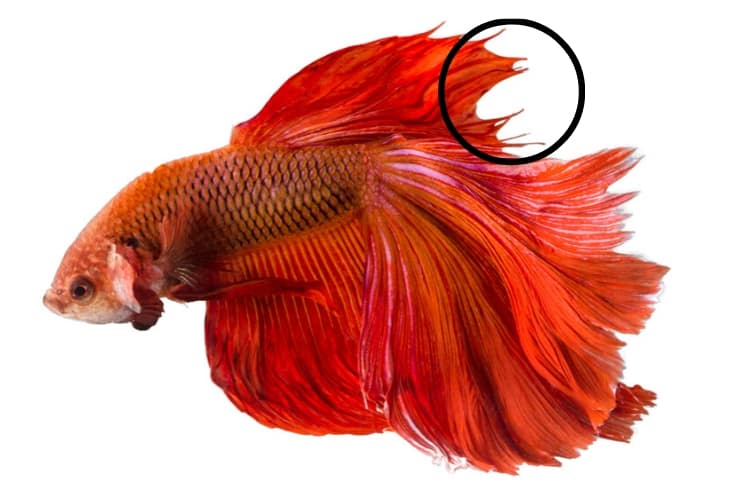
One of bettas’ most common bacterial infections is fin and tail rot. This problem is usually caused by a lack of clean water, as dirty water can harbor harmful bacteria. Fin and tail rot can also be caused by physical damage to the fins or tail, allowing bacteria to enter the tissue and cause an infection.
Fin and tail rot usually starts as a small tear or scrape on the fins or tail. The affected area will then become discolored and begin to disintegrate. If left untreated, fin and tail rot can spread to other parts of the body and eventually kill the fish.
Treatment:
The best way to treat fin and tail rot is to prevent it from happening in the first place. This can be done by keeping the tank clean and changing the water regularly. It is also important to avoid overfeeding, as uneaten food can decay and release harmful bacteria into the water.
If your betta develops fin and tail rot, treating it as soon as possible is important. The first step is to clean the tank and change the water. You should then remove any debris or uneaten food from the tank.
Next, you will need to treat the water with an antibacterial solution. There are various products available, but we recommend using an aquarium-safe product like API Erythromycin. This medication will help to kill the bacteria causing the infection.
2. Columnaris
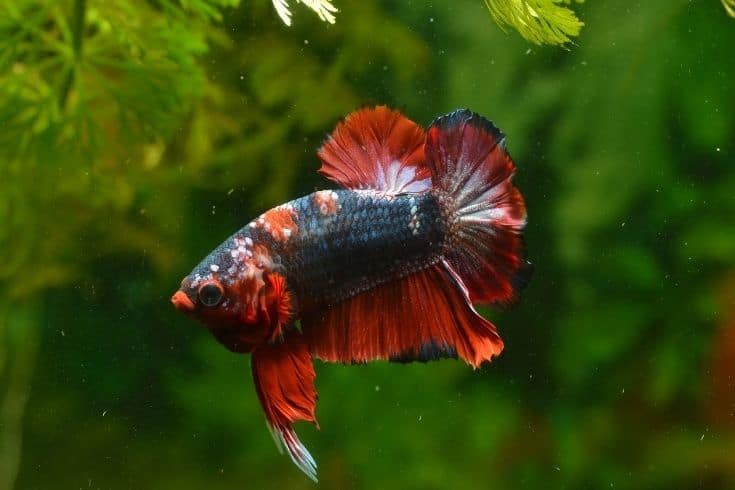
Columnaris is a type of bacteria that can infect bettas and other fish. The Flavobacterium columnare bacteria is usually found in freshwater, and can enter the tank through new fish, plants, or decorations. A healthy, well-maintained tank is less likely to develop columnaris, as the bacteria thrives in dirty, stagnant water.
The symptoms of columnaris include:
- White or gray patches on the skin
- Frayed or disintegrating fins
- Open sores
- Loss of appetite
These symptoms can appear quickly, and the infection can spread rapidly if left untreated. Columnaris is often mistaken for fin rot, but it is important to get a correct diagnosis to administer the proper treatment.
Treatment:
Columnaris is a serious infection that can be difficult to treat. The first step is to clean the tank and change the water. You should then remove any debris or uneaten food from the tank. Then, move the fish to a hospital tank and treat the water with an antibacterial solution.
There are various products available, but we recommend using an aquarium-safe product like API Erythromycin. This medication will help to kill the bacteria causing the infection. In many cases, you will need to treat the fish for several weeks to ensure that the infection is completely gone.
3. Hemorrhagic disease
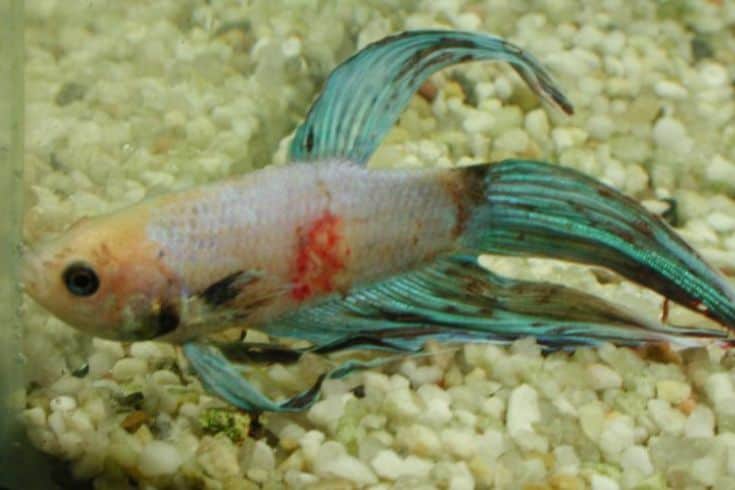
Scary-sounding name aside, hemorrhagic disease is a relatively common infection in bettas. The bacteria that causes this disease, Aeromonas hydrophila, is found in most freshwater tanks. The infection is usually spread through contact with other infected fish, or by sharing contaminated equipment.
The hallmark symptom of hemorrhagic disease is red lesions on the body and fins. These lesions are usually small at first, but can quickly spread and cover a large area of the fish’s body. In severe cases, the fish may also experience hemorrhaging (bleeding) from the fins, gills, or eyes.
Treatment:
Unfortunately, there is no cure for hemorrhagic disease. The best way to treat the infection is to prevent it from happening in the first place. This can be done by keeping the tank clean and changing the water regularly. It is also important to avoid overfeeding, as uneaten food can decay and release harmful bacteria into the water.
If your betta develops hemorrhagic disease, you can best keep them comfortable and try to prevent the infection from spreading. Separate the affected fish from healthy fish, and treat the water with an aquarium-safe disinfectant like API Erythromycin.
4. Dropsy
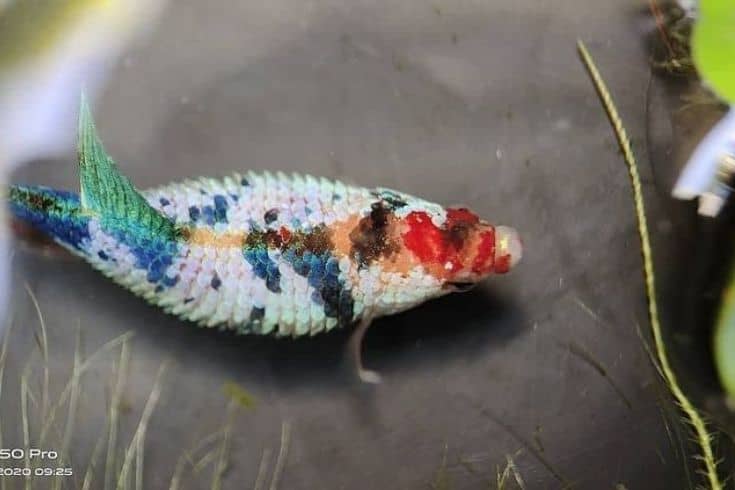
Dropsy is a condition that can affect bettas and other fish. The exact cause is unknown, but it is thought to be caused by a combination of stress, an infection, or toxins in the water. Dropsy is characterized by fluid build-up in the body, which causes the scales to protrude (“pinecone”).
The symptoms of dropsy include:
- Scales that protrude from the body (“pinecone”)
- Bloated abdomen
- Loss of appetite
In severe cases, the fish may also experience seizures or death. Dropsy is a serious condition that can be difficult to treat, so it is important to catch it early.
Treatment:
The first step in treating dropsy is to remove the fish from the main tank and place them in a hospital tank. The water in the hospital tank should be clean and free of toxins. You can then treat the fish with an antibacterial medication like API Melafix. Use the medication as directed, and continue treatment for at least two weeks after the symptoms have disappeared.
It is also important to boost the fish’s immune system during treatment. This can be done by adding aquarium salt to the water or improving the quality of your betta’s food. Really scrutinize the ingredients in pellets and flakes, as some brands are better than others. A good quality diet will help your betta fight off the infection and recover more quickly.
5. Eyecloud
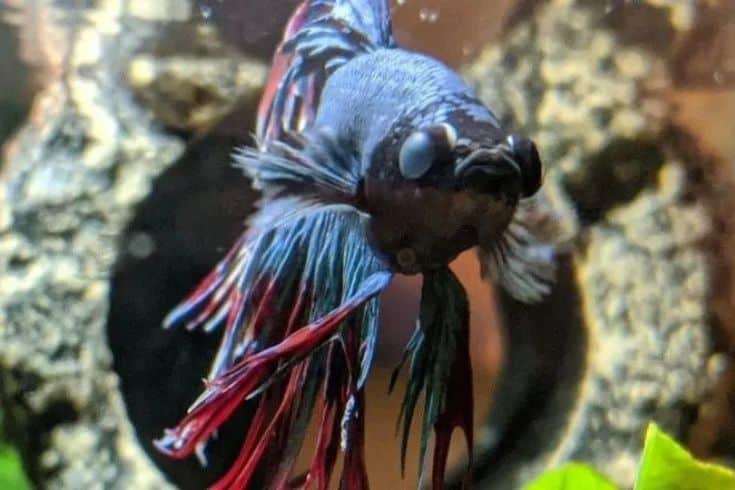
Unlike pop eye, which is characterized by a bulging eye, “eyecloud” is an inflammation of the cornea. The cornea is the clear, outer layer of the eye. Eyecloud can be caused by a number of things, including infection, poor water quality, or trauma to the eye.
The symptoms of eyecloud include:
- Cloudy or milky appearance to the eye
- Redness or discharge from the eye
- Swelling of the eye
Treatment:
The treatment for eyecloud is similar to the treatment for pop eye. The fish should be removed from the main tank and placed in a hospital tank. The water in the hospital tank should be clean and free of toxins. You can use a saltwater soak to help reduce the swelling.
This can be done by adding 1 teaspoon of salt for every 2 gallons of water. The fish should be soaked for 15 minutes, and then returned to the hospital tank.
In addition to the saltwater soak, you can treat the fish with antibacterial medication. This is particularly important if you suspect a bacterial infection. Use the medication as directed, while maintaining ideal water parameters in the hospital tank.
6. Swim Bladder or Bloat
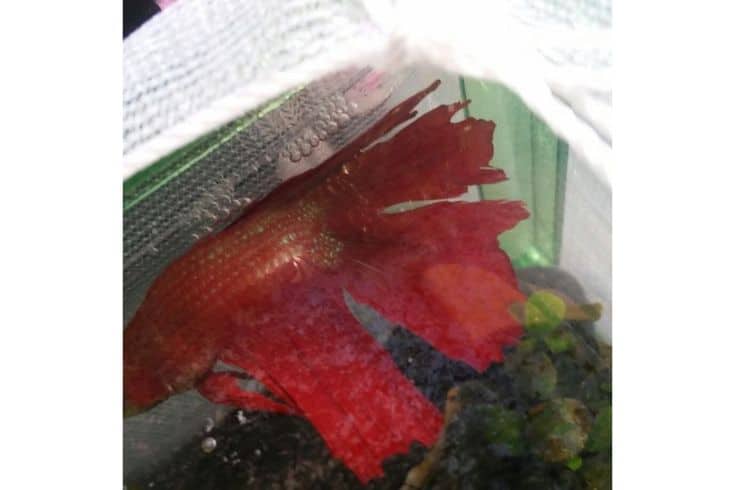
Swim bladder or bloat is a condition that affects betta fish. It is characterized by abnormal swelling of the swim bladder, a sac-like organ that helps the fish stay buoyant. It is often considered one of the hardest illnesses to diagnose because it can be caused by a number of things, including an infection, constipation, or a reaction to certain medications.
The key symptom of swim bladder or bloat is a fish that is having difficulty swimming. The fish may float to the surface or sink to the bottom of the tank. In some cases, the fish may swim in circles or have an abnormal curvature to the body.
Treatment:
The treatment for swim bladder or bloat will depend on the underlying cause. If the fish is constipated, adjust their diet to include more high-fiber foods. This will help to move constipation along and relieve the pressure on the swim bladder. Some fishkeepers find that feeding half a pea to their bettas is helpful.
If the fish is infected, they will need to be treated with an antibiotic. The most common antibiotic used is Kanamycin, but other options are available. The fish will need to be treated for a minimum of 14 days, and the water in the tank should be changed regularly to prevent the spread of the infection.
7. Tuberculosis
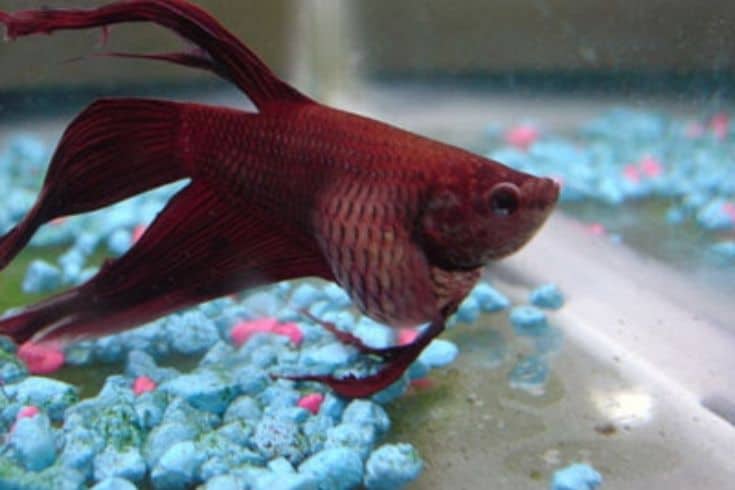
We saved the most serious illness for last. Betta fish tuberculosis is a fatal disease that is caused by a bacteria called Mycobacterium marinum. This bacteria is found in both salt and fresh water, and can be transmitted to fish through open wounds or contaminated food.
Tuberculosis symptoms can be very subtle in the early stages, and may include:
- Loss of appetite
- Lethargy
- Weight loss
However, as the disease progresses, the symptoms will become more severe. The fish may develop open sores on the body, and it may start losing scales and developing open sores. The fins may become frayed and the tail may start to disintegrate. In the final stages of the disease, the fish will become immobile and eventually die.
Treatment:
Sadly, there is no cure for tuberculosis in fish. If you suspect that your fish has the disease, the best thing to do is to euthanize them humanely. This will prevent the disease from spreading to other fish in your tank.
Final Thoughts
Betta fish are beautiful creatures that can bring a lot of joy to your life. However, they are also susceptible to a number of bacterial infections. It is important to be aware of the signs and symptoms of these illnesses so that you can catch them early and get your fish the treatment they need.
We hope that this article has been helpful in educating you about betta fish health. As always, if you have any further questions, please don’t hesitate to reach out to us. We’re always happy to help!
